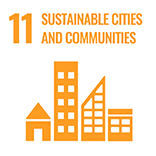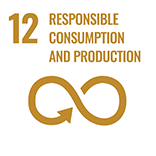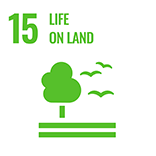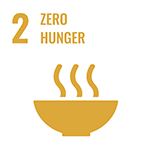Reducing vulnerability and increasing adaptive capacity to respond to impacts of climate change and variability for sustainable livelihoods in agriculture sector in Nepal

Summary
The objective of this solution was to “strengthen the institutional and technical capacities for reducing vulnerability and promoting climate-resilient practices, strategies and plans for effectively responding to the impacts of climate change and variability in agriculture sector in four districts of Nepal”.
As a mountainous country located in the central part of the Himalayas, Nepal is a nation particularly impacted by the effects of climate change, with floods, droughts, hailstorms, soil erosion, and heat and cold waves as some of the recurrent threats to the social and economic well-being of the population. Agriculture, for instance, is one of the most affected yet critical sectors to the country’s economic stability. It employs around 66% of the population and contributes to 27% of the national GDP, but its highly dependent on weather patterns and effective and sustainable farming techniques. However, local communities often lack the necessary knowledge and skills to cope with this type of situations.
The development of this project emerged as a request for assistance from the national government of Nepal to the Food and Agriculture Organization (FAO). Its goal was to reduce the exposure of the population to climate-related risks and support the increase of resilience of the agricultural sector by promoting urgent and immediate adaptation measures and integrating adaptation priorities into local policies, plans, programs and actions in the agricultural sector. It was composed of four main components:
- Component 1: Strengthening of technical and institutional capacities and integrating adaptation into national food and agriculture policies, strategies and plans.
- Component 2: Assessment, monitoring and providing advance early warning information on vulnerabilities, risks of climate change and agro meteorological forecasts to assist better adaptation planning.
- Component 3: Improving awareness, knowledge and communication on climate impacts and adaptation.
- Component 4: Prioritizing and implementing local investment by promoting community based adaptation (CBA) to strengthen livelihood strategies and transfer of adaptation technology in targeted areas.
Overview
- Location:
- Implementation sites:
-
- Single country
- Multiple locations
- Mountain region:
-
Himalayas
- Province:
-
- Western and Eastern Nepal
- Site locations:
-
Arghakhanchi, Kapilbastu, Siraha, Udaypur districts
- Ecosystem type(s):
- Solution type(s):
- Sector(s):
- Climate impact(s) addressed:
- Other climate impact(s) addressed:
-
- soil erosion, hailstorms
- Climate impact time-scale(s):
- Main benefit associated with the solution:
- Co-benefit(s) associated with the solution implementation:
- Implementation timeline:
-
- 2015 - 2019
Solution details
Main beneficiaries & outcomes
The project mainly benefited farming communities in the four participating districts. In total, 3,484 farmers (74% of whom were women) were trained in farmer field schools (FFS) to reduce vulnerability and promote climate-resilient agricultural approaches and adaptation measures, taking all possible efforts towards the social and economic empowerment of the most vulnerable. Numerous awareness-raising, orientation and consultation workshops, and training events were also organized at multiple levels. In addition, some 300 agricultural sector officials at national and district levels were trained in climate change adaptation approaches and provided with training skills. The Ministry of Agriculture and Livestock Development, the Department of Agriculture, the Department of Livestock Services, and the National Agriculture Research Centre are now technically capable of mainstreaming climate change adaptation into agriculture sector decision-making.
Other relevant outcomes include: Development of one training manual on CCA at national and one at district level, testing and documentation of 36 good agricultural, livestock, poultry and forage practices, preparation and implementation of 120 community adaptation plans, formation of a national crop yield forecasting committee, provision of a set of agrometeorological devices to 120 Farmer field school groups, development and approval of eight community Risk Reduction and Adaptation Plans by respective local governments, and revision of the country’s Climate Change Policy 2019.
Planning and implementation
Implementation of the project was under the responsibility of the FAO Country Office in Nepal through the Direct Execution (DEX) modality. It was executed from October 2015 to September 2019 in close collaboration with the Ministry of Agriculture and Livestock Development as secretary of the Steering Committee, and a Project Management Unit consisting of a national technical coordinator, support staff, and four district technical coordinators. All major stakeholders were part of the government at different levels. At the field level, project activities were the responsibility of the District Agricultural Development Offices and the District Livestock Service Offices, and at the local level, local government, Village Development Committees, and Community Based Organizations were also involved.
Outputs and activities were designed based on a climate change-focused needs assessment of the agricultural sector that was conducted at the national, district and local levels, and built on the lessons from a Technical Cooperation Program (TCP) project previously implemented that had piloted the community-based adaptation approach in the country.
Finance
The project was financed by the Global Environment Facility (GEF) through the Least Developed Countries Fund (LDCF).
|
Project Preparation Grant Amount |
50,000 USD |
|
GEF Project Grant |
2,689,498 USD |
|
Co-financing Total |
12,990,000 USD |
|
GEF Agency Fees |
255,502 USD |
|
Total Cost |
15,729,498.00 USD |
Source: GEF, 2021.
Innovation
A number of innovative elements were included in the implementation of these solutions, especially with regard to the use of research and development linkages to ensure the transfer of adaptation practices to communities, bringing a renewed focus to reducing vulnerability and increasing adaptive capacity. The knowledge, skills and technologies for adaptation were also very innovative and were introduced with the participation of farmers. In this case, farmers especially appreciated the training on climate-smart farming techniques, as well as the introduction of the drum seeder, the zero-till seed cum fertilizer drill machine, the UMMB blocker machines, the chaff cutter and the associated knowledge and skills which were new to them.
Performance evaluation
The performance of the project was assessed in a final evaluation conducted by independent evaluation specialists. It covered all aspects of implementation at the national level and in the four project districts, from inception to completion, and took into account the following criteria: relevance of objectives and results, including appropriateness of design, achievement of results, efficiency, project implementation and execution, monitoring and evaluation, sustainability of results, and stakeholder participation. The evaluation included consultation with relevant stakeholders, as well as the inclusion of feedback from school groups in the field. Overall, the project was rated satisfactory and its overall sustainability was considered likely.
Long term project sustainability and maintenance
The project design included a plan to monitor and evaluate the achievement of results on a regular basis and from a bottom-up approach. District, regional and national progress reports were prepared every six months, and a project implementation review was conducted annually. A baseline survey, a mid-term review and a final survey were also conducted.
Although the sustainability of many adaptive farming practices will depend to some extent on the support farmers receive from local and provincial government agencies, most of the project results have been rated as highly likely to sustain. The FFS groups reportedly follow a shared responsibility mechanism whereby users help protect and maintain their community’s assets, and in the case of training programs, a curriculum will be integrated into regular DoA and DoLS training activities. Moreover, several crop modeling and yield forecasting systems and procedures have been developed and are now institutionalized in MoALD, who is committed to the continuity of technical functions.
Capacities for design and implementation
Knowledge
The experience and existing capacities of the main stakeholders proved to be very useful in this project. Initially, lessons learned from previous projects were used to design the solutions in a more reliable way, while later, similar capacities were used to implement knowledge, awareness and capacity building activities, and to provide adequate training to FFS groups and government staff members in the agricultural sector. Moreover, to continue such knowledge transfer, a wide range of knowledge products were developed throughout the life of the project, including good practices in climate adaptation that are planned to be published or disseminated online.
A District Project Technical Team established in each district provided the necessary technical assistance for implementation and monitoring of activities on the field level.
Technology
Available technologies related to the agricultural sectors were highly beneficial for transfer to the targeted areas and for strengthening local resilience. Innovative technologies such as improved cropping systems, improved seed storage, slope farming technology, and crop and livestock management practices were introduced to the FFS groups, along with the necessary skills for their management.
Several crop modeling and agro-meteorological forecasting systems have been developed and incorporated into MoALD. They will provide early warning information and assist in better adaptation planning.
Political / Legal
The motivation of the Government of Nepal for the design and implementation of this project is very clear, as it was the national government that made the initial request to FAO for the preparation of the project proposal. Its implementation was indeed intended to strengthen capacities to reduce vulnerability and to promote climate-resilient practices, strategies and plans to respond to climate change impacts in the agricultural sector. Accordingly, the project was designed in line with Nepal’s priorities and needs identified under its National Adaptation Programme of Action (NAPA, 2010), the National Strategy for Disaster Risk Management (NSDRM, 2008) and the National Agriculture Sector Development Priority(NASDP) for the Medium-Term (2010/11-2014/15).
Institutional
The institutional capacities of the different governmental institutions that collaborated in the project as key stakeholders were very relevant to the achievement of the results and objectives. By creating partnerships and maintaining constant communication, they were able not only to implement the measures in a more organized and satisfactory manner, but also to adapt to the transitory governance situations they encountered. Furthermore, since the intention of the project was to strengthen such capacities in the agricultural sector, Component 1 included several outputs designed with that objective in mind. However, the achievement of this goal was not secured due to recurrent staff transfers and relocations.
Some of the institutional arrangements established included a steering committee, project management unit, regional monitoring teams, district project units, LAPA (Local Adaptation Plans of Action) preparation teams, and farmer’s groups.
Socio-cultural
The involvement of local farmers was critical to the implementation of the project’s climate adaptation measures in the field. They actively participated in farmer field schools, which helped them to accept, adopt and adapt to the climate-adapted crop varieties and associated technologies introduced, and contributed to improving their knowledge and resilience to climate change impacts. On the other hand, other inhabitants of the target regions, who did not participate in the FFS, also showed real interest in the new practices, to the extent that they paid close attention to the introduced practices and replicated them. In the final evaluation report, these details are recognized as probably the best evidence not only of the social acceptance but also of the social sustainability of the project’s agricultural practices.
NGOs or private institutions were not included as stakeholders in the project implementation and their participation was limited to the procurement of technical services through outsourcing.
Outlook & Scalability
Barriers and adverse effects
One of the main problems encountered in the project was the frequent transfer and relocation of agricultural sector personnel at all government levels, resulting in a limited contribution of training efforts to the strengthening of institutional capacities. This problem was most evident at the regional and local levels. However, according to the final evaluation report, despite the circumstances, the institutional arrangements proved to be adaptable and capable enough for delivering and achieving the expected results and objectives.
Transformation and future outlook
This solution supports transformation in the targeted mountain areas through several tactics. First, it has contributed to improving the awareness and adaptation skills of the local population, as well as the institutional and technical capacities of national, regional and local government entities. Thanks to the training activities carried out in the FFSs, which promoted community-based adaptation, farmers saw their resilience enhanced through the integration of innovative practices. Likewise, an agrometeorological early warning system that utilizes Android phones has been made available to them.
Potential for upscaling and replication
Replication and/or up-scaling of this project has not yet been achieved and requires wider dissemination of the knowledge and awareness raising products obtained. However, it has been reported that many of the agricultural practices introduced in the project have already been independently reproduced by local community members in all participating districts.
Regarding the mainstreaming efforts, the national government of Nepal has revised and published its “Climate Change Policy, 2019” which includes one policy and six strategy-level recommendations made by the project. Similarly, several elements such as climate change adaptation training manuals are expected to be integrated into national food and agriculture policies.














Comments
There is no content